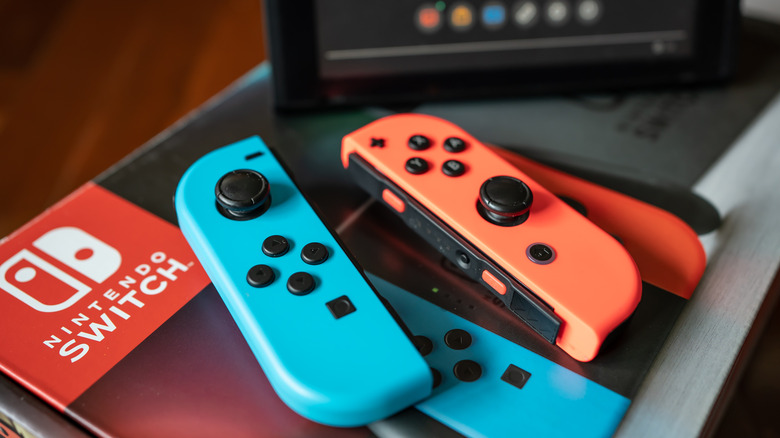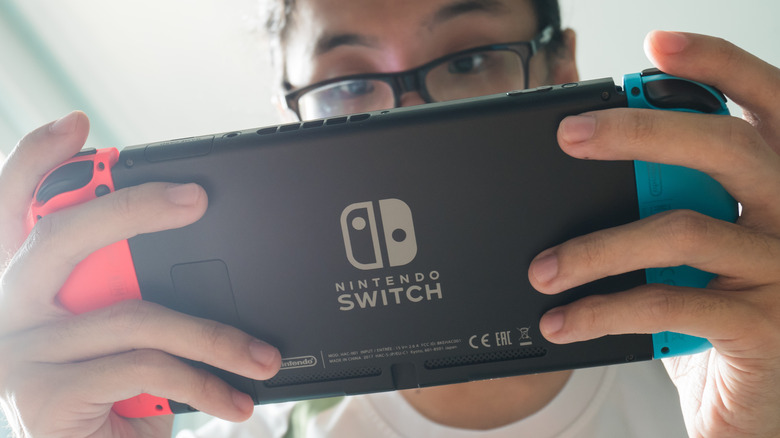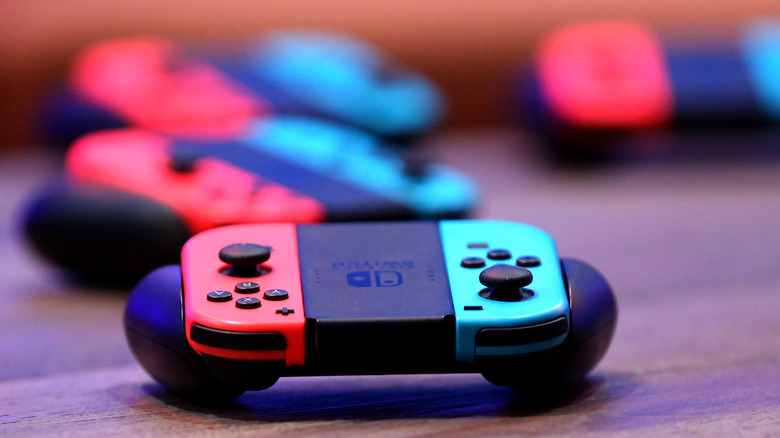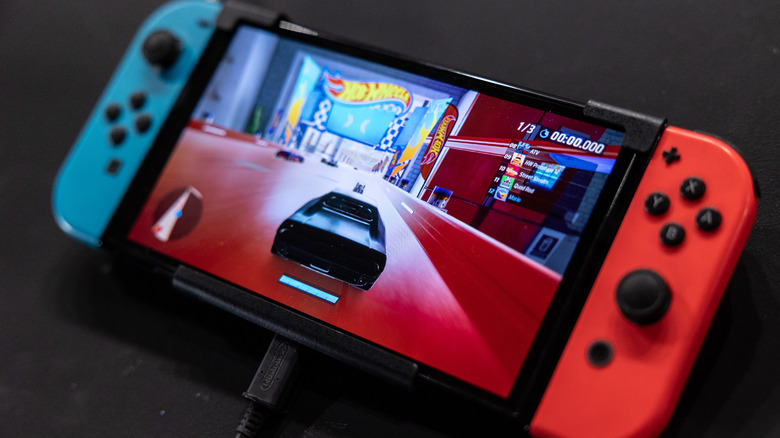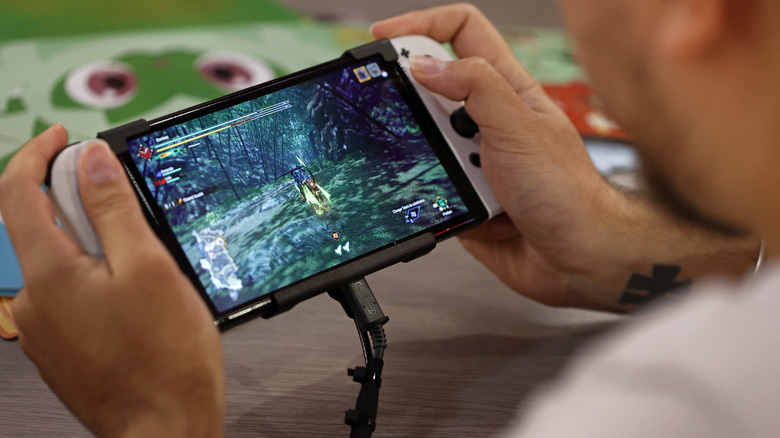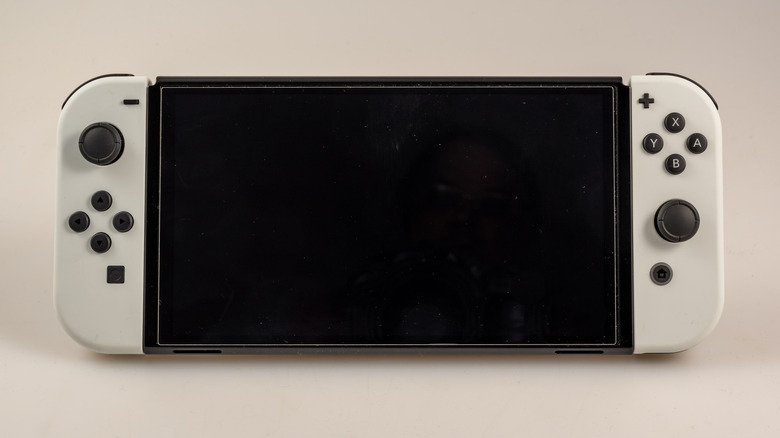Why Your Nintendo Switch Is Slow, And What You Can Do To Fix It
Whether you're using a standard Nintendo Switch, or the upgraded OLED model, there's a good chance that you've encountered an issue or two. Maybe one (or both) of your Joy-Cons have started showing signs of drift. Or maybe you've begun to notice that your console isn't running as smoothly as it used to.
While Nintendo has been offering free Joy-Con repairs for quite some time now, the same can't be said for system slowness. Though, it's also generally much easier for you to take care of a slow Switch than it is for you to crack open a Joy-Con and fix the infamous stick drift problem.
The primary hurdle is figuring out what's causing your Switch to slow down in the first place, and it could be caused by a couple different factors. More often than not, it's either an internet problem, or something's gone awry with your software somewhere down the line.
How will I know if my Switch is slow?
Chances are you'll notice pretty quickly if your Switch starts to slow down. You might experience unexpected frame drops while playing something, or you could run into controller input lag. Maybe it's taking longer for menus to appear, or to go away when you exit them. That same menu lag could apply to the Switch's system menu.
However, it's also possible that the Switch's performance has only declined slightly — or so gradually that you can't be sure if it wasn't always like this. If you suspect your Switch might be slowing down but aren't sure, perform a few simple checks. Try playing a game you haven't touched in a while to see if it performs better/worse. Test a game you think might be running slowly in both handheld and docked mode, and see if there's a difference.
You can even take to the internet, which has almost as many gameplay videos and playthroughs as it does memes (actually probably not that many). Start up the game you want to test, then pull up a video of that same game on YouTube and compare performance. Though, you should also take note of whether there are any model differences (i.e. standard or OLED) between your Switch and the one being used in the video.
Check your internet connection
If your Switch feels slow, the issue may be due to your internet connection. Slow Wi-Fi could, for example, result in long loading periods, depending on what you're doing (trying to stream a video, for example). As well, a spotty internet connection could result in online games pausing for a few seconds or longer due to brief periods when the connection drops out entirely. To check your Switch's connection to your internet network, you need to:
- Open System Settings.
- Select Internet.
- Select Test Connection.
- Wait for the connection test to finish.
If the internet test was successful, that means you're online. However, it's still possible that your network isn't working optimally, so you should consider restarting your modem and router — this is typically accomplished by pressing a reboot button on the front of the modem or simply unplugging it for several seconds and then plugging it back in. It may take a few minutes for the connection to be back up and running. Try using the Switch again after the reboot; if it feels like the content is loading faster and the game or streaming issues have disappeared, then you've likely solved the problem.
Install a system update if available
If you're sure your internet isn't the source of the problem, you may need to install a system update to see whether that solves things. This is only an option if a system update is available, however. In order to check, you need to:
- Open System Settings.
- Select System.
- Select System Update.
- Wait for the Switch to check whether an update is available.
If a system update is found, the Switch will automatically download it from Nintendo's servers and then install it on the console. Once installation is finished, the console will likely restart — don't interrupt the process, as you could potentially brick the console if you stop the update mid-installation. After the console has rebooted, navigate through its menus, open games, and stream videos. If everything feels back to normal, then it is safe to assume the update fixed whatever was wrong.
Check for corrupt data
If your troubleshooting attempts have proven unsuccessful, your Switch may be running poorly due to a software problem unrelated to the system firmware. This could be due to, for example, a recently installed game, a botched game update that was recently installed, or a corrupt game file that is in some way interfering with the console's operation. You should try closing your current game and reopen it; sometimes, that'll be enough to solve the problem. If that achieves nothing, you will need to check for corrupt data.
- Select System Settings.
- Select Data Management.
- Select Manage Software.
- Select the game you were playing when the Switch was running slowly.
- Choose the option titled "Check for corrupt data."
- Wait for the Switch to check the data files.
The Switch will let you know whether it found any corrupt data and how to proceed — it'll also notify you that everything is okay if no corruption was found. You can repeat this process with some other games that may be the source of the issue, such as one you recently installed or a title that was recently updated. If none of them are corrupted, you can try uninstalling and then reinstalling the game(s) you suspect may be the cause, such as the one that has been running particularly slow.
Search for known issues
Unfortunately, sometimes a system update introduces new performance issues or bugs that can't be fixed on the user's end — you'll need to wait for Nintendo to release the patch if that's the case. If this is the cause of your problems, there will likely be many reports from other Switch users online, such as on X, formerly Twitter, and on the /r/NintendoSwitch subreddit. Search for any recent posts about other people experiencing the same issues.
If nothing else, those reports will all but confirm that what you're experiencing is a bug that's outside of your control. If you're lucky, however, someone may have found a temporary workaround for the problem that speeds your Switch back up immediately. There's no guarantee that'll be the case, and this is the most unfortunate outcome, as it means you'll need to wait days at best for the fix to arrive. Still, it's better to know what's going on rather than wasting time with fruitless troubleshooting.
